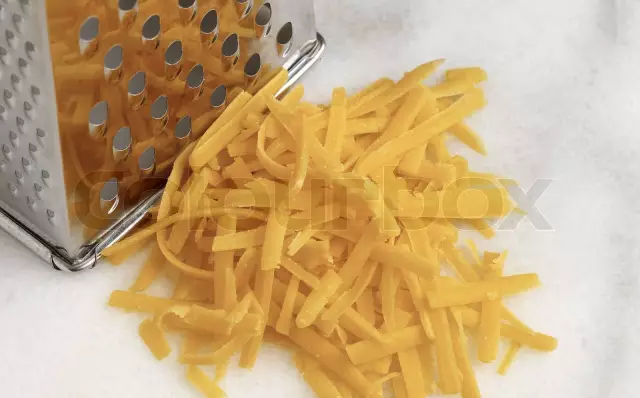- Author Rachel Wainwright [email protected].
- Public 2023-12-15 07:39.
- Last modified 2025-11-02 20:14.
Chub
The chub is a fish belonging to the carp family. It lives mainly in rivers, but sometimes also in freshwater lakes. Chub is widespread in Europe and Asia Minor.

Chub appearance
The chub has a very massive head, slightly flattened on top and an elongated roundish body. The back of the chub is dark green, almost black. The sides are silvery with a slight yellowish tinge. The ventral and anal fins are orange-red, while the pectorals are bright orange. The chub is a fairly large predatory fish. Its weight can reach eight kilograms, and its length is up to 85 cm.
Useful properties and calorie content of chub
Chub is considered one of the most valuable foods. In terms of its nutritional value, it is in no way inferior to the best varieties of meat. However, in contrast to it, it is much easier absorbed by the human body. Therefore, chub dishes are widely used in dietary nutrition, and should also be included in the menu of children and the elderly.
The calorie content of chub meat is quite low and is only 90 kcal per 100 g of product. Therefore, the meat of this fish can be safely included in the menu of people who are watching their weight or who want to lose weight.
Chub meat contains a large amount of various macro- and microelements: phosphorus, bromine, manganese, magnesium, cobalt, calcium, potassium, copper, iron, lithium and boron. The fat of this freshwater fish is no less nutritious and useful. It contains a lot of vitamin A and vitamin D, as well as polyunsaturated fatty acids, which have a pronounced antioxidant effect and prevent the development of cardiovascular diseases and joint diseases.
Chub dishes
Some people believe that the chub is practically inedible and very tasteless fish. In part, they explain their opinion by the fact that the chub is a predator that eats not only fry, but also insects and even mice. Others do not like the fact that chub meat contains a lot of small bones and smells like mud. But, despite all these shortcomings, the chub is widely used in cooking, including dietary nutrition. When properly prepared, chub dishes have high dietary and taste qualities that are superior to the meat of fish such as bream or ide.
Most often, chub meat is baked in foil along with vegetables. In order to fight off the unpleasant odor of mud, you should marinate the peeled fish in lemon juice with the addition of aromatic herbs and garlic.
Chub can be baked with white sauce or stewed in sour cream. Chub fried in a pan or grilled is no less tasty and healthy. This fish can also be used to make fish soup. In addition, boiled chub is an excellent addition to various salads and perfectly replaces beef or poultry.

If desired, the chub can be salted. However, you should not often eat salted chub that has not undergone heat treatment, because in this case, the meat of this fish interferes with the absorption of vitamin B1 from the intestine, which can lead to the development of a hypovitaminosis state.
Chub dishes are served with boiled potatoes, kvass, lightly salted cucumbers, sweet green peppers or toasted slices of white bread. For decoration, use lemon slices, pieces of cucumber, tomato or green lettuce.
Supermarkets usually sell frozen chub. Fresh this fish can only be bought at fish markets. When buying a chub, remember that its meat spoils very quickly when stored outdoors, so always pay special attention to the shelf life of the fish. In addition, when giving chub dishes to young children, be extremely careful, because fish meat contains many small bones and the child may choke.
YouTube video related to the article:
Found a mistake in the text? Select it and press Ctrl + Enter.






